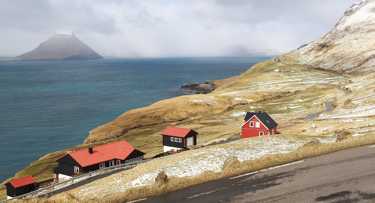Faroe Islands: What to see and do?
The Faroe Islands are an archipelago perched in the North Atlantic Ocean. Nestled between Iceland and Norway, these wild and unspoilt islands are a dream destination for nature lovers and adventurers. With its spectacular scenery, unique culture and rich wildlife, the Faroe Islands promise an unforgettable experience.
The first sight that never fails to impress visitors is the raw beauty of the landscape. The Faroe Islands are often compared to a lunar landscape, with steep cliffs, deep fjords and verdant valleys. Don't miss a visit to the famous Mykines mountains, where you can watch seabirds flying overhead. The waterfalls of Gásadalur and Mulafossur are also breathtaking, with their crystal-clear waters falling into the ocean.
In addition to their breathtaking scenery, the Faroe Islands also offer a unique cultural wealth. The Faroese are proud of their heritage and traditions, and are always happy to share their way of life with travelers. Be sure to stop off at a traditional village, such as the capital Tórshavn, where you can admire the typical colorful houses and visit the National Museum, which traces the history of the islands.
If you're an outdoor enthusiast, the Faroe Islands are paradise. There's plenty to do, including hiking, fishing, kayaking and wildlife watching. The Faroe Islands are home to a wide variety of birds, including puffins, petrels and jaegers, which can be seen on guided tours. Fishing enthusiasts will be delighted to take part in a sea fishing excursion, where they will have the chance to catch their own dinner.
As far as transport is concerned, the Faroe Islands are well served. Vágar International Airport is the main gateway, with direct flights from several European cities. Once on the archipelago, you can get around by bus, which connects the main towns and villages. The bus network is reliable and convenient, offering travelers the opportunity to discover the most popular tourist sites.
For those who prefer independence, car rental is also an option. Roads are well maintained, but it should be noted that some of them can be narrow and winding, so it's important to drive with caution.
The Faroe Islands offer a unique experience for travelers in search of incredible scenery, fascinating culture and outdoor adventure. With its dramatic cliffs, picturesque villages and impressive wildlife, this northern archipelago is a destination not to be missed. So pack your bags and fly to the Faroe Islands, where adventure awaits.

